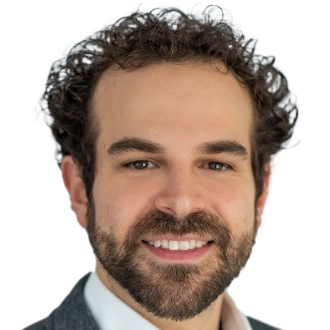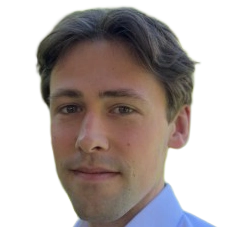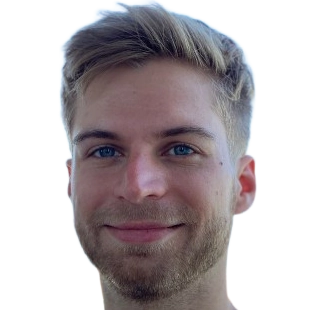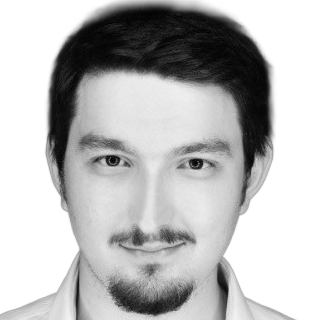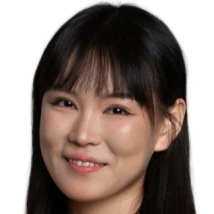Research Group Benjamin Busam
Benjamin Busam
heads the Photogrammetry and Remote Sensing Lab at TU Munich.
The group researches how machines can perceive and understand their environment in 3D. At the intersection of computer vision, robotics, and artificial intelligence, the Photogrammetry and Remote Sensing team develops methods for 3D reconstruction from image and sensor data and creates digital twins for a photorealistic and geometrically precise in-silico representation of our world. Multimodal data are automatically analyzed following the motto: “Making Machines See and Think in 3D” – from sensor to system.
Team members @MCML
PhD Students
Recent News @MCML
Publications @MCML
2025
[24]
L. Kuang • Y. Velikova • M. Saleh • J.-N. Zaech • D. P. Paudel • B. Busam
ConceptPose: Training-Free Zero-Shot Object Pose Estimation using Concept Vectors.
Preprint (Dec. 2025). arXiv
ConceptPose: Training-Free Zero-Shot Object Pose Estimation using Concept Vectors.
Preprint (Dec. 2025). arXiv
[23]
A. Rota • M. Kiray • M. A. Karaoglu • P. Ruhkamp • E. De Momi • N. Navab • B. Busam
UnReflectAnything: RGB-Only Highlight Removal by Rendering Synthetic Specular Supervision.
Preprint (Dec. 2025). arXiv GitHub
UnReflectAnything: RGB-Only Highlight Removal by Rendering Synthetic Specular Supervision.
Preprint (Dec. 2025). arXiv GitHub
[22]

E. Özsoy • A. Mamur • F. Tristram • C. Pellegrini • M. Wysocki • B. Busam • N. Navab
EgoExOR: An Ego-Exo-Centric Operating Room Dataset for Surgical Activity Understanding.
NeurIPS 2025 - 39th Conference on Neural Information Processing Systems. San Diego, CA, USA, Nov 30-Dec 07, 2025. To be published. Preprint available. URL
EgoExOR: An Ego-Exo-Centric Operating Room Dataset for Surgical Activity Understanding.
NeurIPS 2025 - 39th Conference on Neural Information Processing Systems. San Diego, CA, USA, Nov 30-Dec 07, 2025. To be published. Preprint available. URL
[21]

J. Huang • S. R. Vutukur • P. K. Yu • N. Navab • S. Ilic • B. Busam
RayPose: Ray Bundling Diffusion for Template Views in Unseen 6D Object Pose Estimation.
ICCV 2025 - IEEE/CVF International Conference on Computer Vision. Honolulu, Hawai’i, Oct 19-23, 2025. To be published. Preprint available. URL GitHub
RayPose: Ray Bundling Diffusion for Template Views in Unseen 6D Object Pose Estimation.
ICCV 2025 - IEEE/CVF International Conference on Computer Vision. Honolulu, Hawai’i, Oct 19-23, 2025. To be published. Preprint available. URL GitHub
[20]
W. Li • J. Huang • H. Jung • G. Zhai • P. Z. Ramirez • A. Costanzino • F. Tosi • M. Poggi • L. Di Stefano • J.-B. Weibel • D. Antensteiner • M. Vincze • J. He • Y. Wang • K. Zhang • L. Jiao • L. Li • F. Liu • W. Ma • B. Busam
TRICKY 2025 HouseCat6D Object Pose Estimation Challenge with Specular and Transparent Surfaces.
TRICKY @ICCV 2025 - Transparent & Reflective objects In the wild Challenges at the IEEE/CVF International Conference on Computer Vision. Honolulu, Hawai’i, Oct 19-23, 2025. To be published. Preprint available. URL GitHub
TRICKY 2025 HouseCat6D Object Pose Estimation Challenge with Specular and Transparent Surfaces.
TRICKY @ICCV 2025 - Transparent & Reflective objects In the wild Challenges at the IEEE/CVF International Conference on Computer Vision. Honolulu, Hawai’i, Oct 19-23, 2025. To be published. Preprint available. URL GitHub
[19]
G. Zhai • Y. Zhou • X. Deng • L. Heckler • N. Navab • B. Busam
Foundation Visual Encoders Are Secretly Few-Shot Anomaly Detectors.
Preprint (Oct. 2025). arXiv
Foundation Visual Encoders Are Secretly Few-Shot Anomaly Detectors.
Preprint (Oct. 2025). arXiv
[18]
C. Pellegrini • E. Özsoy • B. Busam • B. Wiestler • N. Navab • M. Keicher
RaDialog: Large Vision-Language Models for X-Ray Reporting and Dialog-Driven Assistance.
MIDL 2025 - Medical Imaging with Deep Learning. Salt Lake City, UT, USA, Jul 09-11, 2025. URL GitHub
RaDialog: Large Vision-Language Models for X-Ray Reporting and Dialog-Driven Assistance.
MIDL 2025 - Medical Imaging with Deep Learning. Salt Lake City, UT, USA, Jul 09-11, 2025. URL GitHub
[17]

W. Li • H. Xu • J. Huang • H. Jung • P. K. Yu • N. Navab • B. Busam
GCE-Pose: Global Context Enhancement for Category-level Object Pose Estimation.
CVPR 2025 - IEEE/CVF Conference on Computer Vision and Pattern Recognition. Nashville, TN, USA, Jun 11-15, 2025. DOI GitHub
GCE-Pose: Global Context Enhancement for Category-level Object Pose Estimation.
CVPR 2025 - IEEE/CVF Conference on Computer Vision and Pattern Recognition. Nashville, TN, USA, Jun 11-15, 2025. DOI GitHub
[16]

E. Özsoy • C. Pellegrini • T. Czempiel • F. Tristram • K. Yuan • D. Bani-Harouni • U. Eck • B. Busam • M. Keicher • N. Navab
MM-OR: A Large Multimodal Operating Room Dataset for Semantic Understanding of High-Intensity Surgical Environments.
CVPR 2025 - IEEE/CVF Conference on Computer Vision and Pattern Recognition. Nashville, TN, USA, Jun 11-15, 2025. DOI GitHub
MM-OR: A Large Multimodal Operating Room Dataset for Semantic Understanding of High-Intensity Surgical Environments.
CVPR 2025 - IEEE/CVF Conference on Computer Vision and Pattern Recognition. Nashville, TN, USA, Jun 11-15, 2025. DOI GitHub
[15]
E. Özsoy • F. Holm • C. Pellegrini • T. Czempiel • M. Saleh • N. Navab • B. Busam
Location-Free Scene Graph Generation.
MULA @CVPR 2025 - 8th Multimodal Learning and Applications Workshop at IEEE/CVF Conference on Computer Vision and Pattern Recognition. Nashville, TN, USA, Jun 11-15, 2025. DOI
Location-Free Scene Graph Generation.
MULA @CVPR 2025 - 8th Multimodal Learning and Applications Workshop at IEEE/CVF Conference on Computer Vision and Pattern Recognition. Nashville, TN, USA, Jun 11-15, 2025. DOI
[14]
J. Huang • J. Liang • J. Hu • M. Sundermeyer • P. K. T. Yu • N. Navab • B. Busam
XYZ-IBD: High-precision Bin-picking Dataset for Object 6D Pose Estimation Capturing Real-world Industrial Complexity.
Preprint (Jun. 2025). arXiv GitHub
XYZ-IBD: High-precision Bin-picking Dataset for Object 6D Pose Estimation Capturing Real-world Industrial Complexity.
Preprint (Jun. 2025). arXiv GitHub
[13]
D. Zhu • S. Gavranovic • F. Boussuge • B. Busam • S. Ilic
Generative Data Augmentation for Object Point Cloud Segmentation.
Preprint (May. 2025). arXiv
Generative Data Augmentation for Object Point Cloud Segmentation.
Preprint (May. 2025). arXiv
[12]
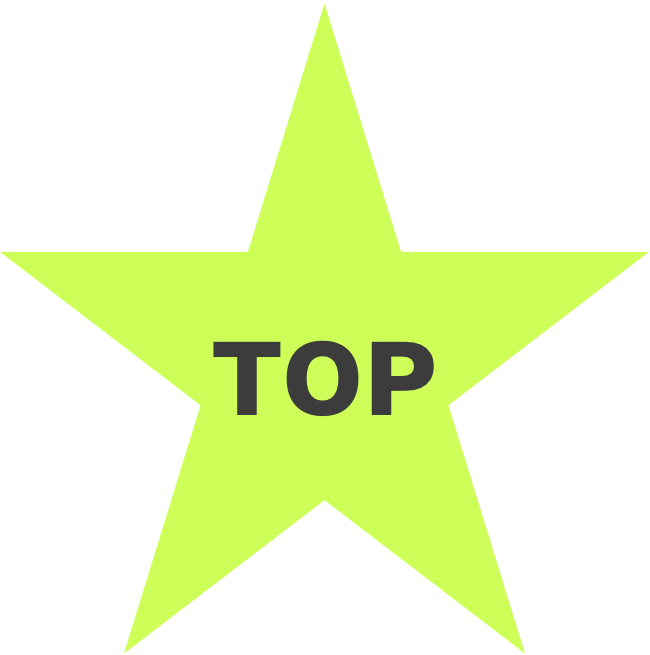
J. Huang • P. K. Yu • N. Navab • B. Busam
TTAPose: Test-time Adaptation for Unseen Object Pose Estimation.
IEEE Robotics and Automation Letters 10.6. Apr. 2025. DOI
TTAPose: Test-time Adaptation for Unseen Object Pose Estimation.
IEEE Robotics and Automation Letters 10.6. Apr. 2025. DOI
[11]
G. Zhai • E. P. Örnek • D. Z. Chen • R. Liao • Y. Di • N. Navab • F. Tombari • B. Busam
EchoScene: Indoor Scene Generation via Information Echo over Scene Graph Diffusion.
Nectar Track @3DV 2025 - Nectar Track at the 12th International Conference on 3D Vision. Singapore, Mar 25-28, 2025. arXiv
EchoScene: Indoor Scene Generation via Information Echo over Scene Graph Diffusion.
Nectar Track @3DV 2025 - Nectar Track at the 12th International Conference on 3D Vision. Singapore, Mar 25-28, 2025. arXiv
2024
[10]

S. R. Vutukur • R. L. Haugaard • J. Huang • B. Busam • T. Birdal
Alignist: CAD-Informed Orientation Distribution Estimation by Fusing Shape and Correspondences.
ECCV 2024 - 18th European Conference on Computer Vision. Milano, Italy, Sep 29-Oct 04, 2024. DOI
Alignist: CAD-Informed Orientation Distribution Estimation by Fusing Shape and Correspondences.
ECCV 2024 - 18th European Conference on Computer Vision. Milano, Italy, Sep 29-Oct 04, 2024. DOI
[9]

G. Zhai • E. P. Örnek • D. Z. Chen • R. Liao • Y. Di • N. Navab • F. Tombari • B. Busam
EchoScene: Indoor Scene Generation via Information Echo over Scene Graph Diffusion.
ECCV 2024 - 18th European Conference on Computer Vision. Milano, Italy, Sep 29-Oct 04, 2024. DOI
EchoScene: Indoor Scene Generation via Information Echo over Scene Graph Diffusion.
ECCV 2024 - 18th European Conference on Computer Vision. Milano, Italy, Sep 29-Oct 04, 2024. DOI
[8]
F. Stilz • M. Karaoglu • F. Tristram • N. Navab • B. Busam • A. Ladikos
Progressive Optimization of Camera Pose and 4D Radiance Fields for long Endoscopic Videos.
NeuralBCC @ECCV 2024 - 1st Workshop on Neural Fields Beyond Conventional Cameras at the 18th European Conference on Computer Vision. Milano, Italy, Sep 29-Oct 04, 2024. PDF
Progressive Optimization of Camera Pose and 4D Radiance Fields for long Endoscopic Videos.
NeuralBCC @ECCV 2024 - 1st Workshop on Neural Fields Beyond Conventional Cameras at the 18th European Conference on Computer Vision. Milano, Italy, Sep 29-Oct 04, 2024. PDF
[7]
M. Wysocki • M. F. Azampour • F. Tristram • B. Busam • N. Navab
Beyond Ultra-NeRF: Explainable Neural Fields for Ultrasound.
NeuralBCC @ECCV 2024 - 1st Workshop on Neural Fields Beyond Conventional Cameras at the 18th European Conference on Computer Vision. Milano, Italy, Sep 29-Oct 04, 2024. URL
Beyond Ultra-NeRF: Explainable Neural Fields for Ultrasound.
NeuralBCC @ECCV 2024 - 1st Workshop on Neural Fields Beyond Conventional Cameras at the 18th European Conference on Computer Vision. Milano, Italy, Sep 29-Oct 04, 2024. URL
[6]
S. R. Vutukur • M. Ba • B. Busam • M. Kayser • G. Singh
SABER-6D: Shape Representation Based Implicit Object Pose Estimation.
Workshop @ECCV 2024 - Computer Vision Workshop at the 18th European Conference on Computer Vision. Milano, Italy, Sep 29-Oct 04, 2024. DOI
SABER-6D: Shape Representation Based Implicit Object Pose Estimation.
Workshop @ECCV 2024 - Computer Vision Workshop at the 18th European Conference on Computer Vision. Milano, Italy, Sep 29-Oct 04, 2024. DOI
[5]

Y. Chen • Y. Di • G. Zhai • F. Manhardt • C. Zhang • R. Zhang • F. Tombari • N. Navab • B. Busam
SecondPose: SE(3)-Consistent Dual-Stream Feature Fusion for Category-Level Pose Estimation.
CVPR 2024 - IEEE/CVF Conference on Computer Vision and Pattern Recognition. Seattle, WA, USA, Jun 17-21, 2024. DOI
SecondPose: SE(3)-Consistent Dual-Stream Feature Fusion for Category-Level Pose Estimation.
CVPR 2024 - IEEE/CVF Conference on Computer Vision and Pattern Recognition. Seattle, WA, USA, Jun 17-21, 2024. DOI
[4]

J. Huang • H. Yu • K.-T. Yu • N. Navab • S. Ilic • B. Busam
MatchU: Matching Unseen Objects for 6D Pose Estimation from RGB-D Images.
CVPR 2024 - IEEE/CVF Conference on Computer Vision and Pattern Recognition. Seattle, WA, USA, Jun 17-21, 2024. DOI
MatchU: Matching Unseen Objects for 6D Pose Estimation from RGB-D Images.
CVPR 2024 - IEEE/CVF Conference on Computer Vision and Pattern Recognition. Seattle, WA, USA, Jun 17-21, 2024. DOI
[3]

H. Jung • S.-C. Wu • P. Ruhkamp • G. Zhai • H. Schieber • G. Rizzoli • P. Wang • H. Zhao • L. Garattoni • D. Roth • S. Meier • N. Navab • B. Busam
HouseCat6D -- A Large-Scale Multi-Modal Category Level 6D Object Perception Dataset with Household Objects in Realistic Scenarios.
CVPR 2024 - IEEE/CVF Conference on Computer Vision and Pattern Recognition. Seattle, WA, USA, Jun 17-21, 2024. DOI
HouseCat6D -- A Large-Scale Multi-Modal Category Level 6D Object Perception Dataset with Household Objects in Realistic Scenarios.
CVPR 2024 - IEEE/CVF Conference on Computer Vision and Pattern Recognition. Seattle, WA, USA, Jun 17-21, 2024. DOI
2023
[2]

G. Zhai • E. P. Örnek • S.-C. Wu • Y. Di • F. Tombari • N. Navab • B. Busam
CommonScenes: Generating Commonsense 3D Indoor Scenes with Scene Graph Diffusion.
NeurIPS 2023 - 37th Conference on Neural Information Processing Systems. New Orleans, LA, USA, Dec 10-16, 2023. URL
CommonScenes: Generating Commonsense 3D Indoor Scenes with Scene Graph Diffusion.
NeurIPS 2023 - 37th Conference on Neural Information Processing Systems. New Orleans, LA, USA, Dec 10-16, 2023. URL
©all images: LMU | TUM
